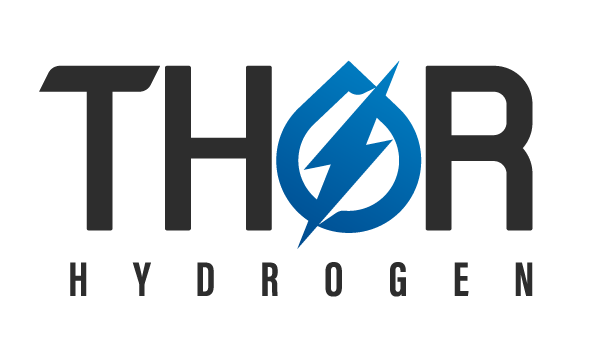The Colours of Hydrogen
On methods of making hydrogen and the greenhouse gas emissions associated with each.
Grey Hydrogen - The vast proportion of hydrogen manufactured in the world today is produced from natural gas either by steam methane reforming or autothermal methane reforming. The hydrogen market is well established, an approximately $100 billion market producing 60 million tonnes annually. Current hydrogen production is predominantly used for chemical feedstock (e.g. for making ammonia, NH3) or for use as a process gas (e.g. for petroleum refining or in steel manufacture) The production of grey hydrogen is a carbon intensive process in which approximately eight tonnes of carbon dioxide are emitted for each tonne of hydrogen produced. Grey hydrogen is defined as hydrogen production from methane that does not control these carbon emissions. In terms of decarbonization, there is therefore immense opportunity, as demand for hydrogen increases, to either produce hydrogen in a manner that either controls (or mitigates) emission of CO2 - or that does not produce it in the first place.
Supplying hydrogen to industrial users is now a major global business. Demand for hydrogen, which has grown more than threefold since 1975, continues to rise – at present almost entirely supplied from fossil fuels, with 6% of global natural gas and 2% of global coal going to hydrogen production. Consequently, production of hydrogen from fossil fuel sources is responsible for CO2 emissions of around 830 million tonnes of carbon dioxide per year, greater than the annual carbon emissions of Germany. (IEA)
Blue Hydrogen – If carbon emitted in the manufacture of hydrogen from natural gas is sequestered via CCUS (Carbon Capture Utilization and Storage) the product is termed ‘blue hydrogen’. The blue hydrogen economy is emerging to supplant the existing production of grey hydrogen. Made predominantly from steam reforming of natural gas and using CCUS technology to capture and store the CO2, blue hydrogen is a low carbon solution, sequestering greater than 92% of the emitted carbon dioxide compared with grey hydrogen; but it comes with a challenging problem of fugitive methane emissions, methane that escapes from the gas wells and transportation systems that supply the process. This is critical because methane gas has a GWP (Global Warming Potential) of 90 times that of carbon dioxide on a twenty-year time-frame; therefore persistent, residual leaks can have a significant global warming impact if methane emissions are not eliminated. It is recognized that blue hydrogen for low-carbon feed-stock, process gases and for the emerging markets of hydrogen mobility will be a key to kick-starting a broadly-based global hydrogen economy. However, central to the manufacture of blue hydrogen is the proximity of a natural gas supply and a means of artificially sequestering carbon – either through compression and storage or some other means of capturing and locking-in the carbon – e.g. into carbonate compounds.
Green Hydrogen – Using renewable energy sources such as wind, solar photovoltaic, tidal etc. it is possible to use the process of electrolysis, introducing electricity to electrolyse (split) water into its constituents, hydrogen and oxygen. There is no carbon associated with the process itself (although, as with all physical equipment, there is one-time carbon budget inherent in the manufacture of the system) and so the term green hydrogen is often used for renewable hydrogen. Unlike blue hydrogen, green hydrogen does not require a hydrocarbon supply or reservoir for its production. Water is the sole feed-stock and at the electrolysis stage (making hydrogen) the emission is oxygen. At the power conversion stage (whether converting back into electricity for power or mobility or combusting) the emission is simply water. Because there is no reliance on hydrocarbons, the production of green hydrogen is acknowledged to be more universally applicable. As described in accompanying Hydrogen 101 posts, the versatility and flexibility of hydrogen as an energy carrier brings great potential for geopolitical equalization of access to energy across the world’s nations.
